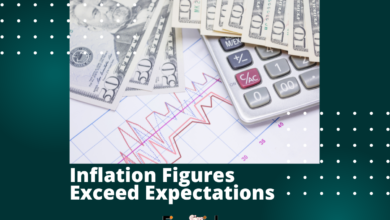Comparing Savings Accounts: Which One Will Make You the Richest?

Savings accounts, an essential financial tool for both stash and growth, offer interest earnings and prompt access to funds, catering to a broad spectrum of financial goals including emergencies, major purchases, or long-term aspirations15. Available through traditional banks and online platforms, these accounts vary significantly in terms of Annual Percentage Yield (APY), fees, minimum deposit requirements, and liquidity23. As individuals aim to optimize their financial plan, the quest for which savings account will earn you the most money becomes crucial35.
With options ranging from traditional savings accounts to high-yield variants, money market accounts, certificates of deposit (CDs), and even fixed annuities, understanding the financial benefits, such as top rate interest earnings, guaranteed returns, and the power of compound interest is key35. Importantly, selecting the right account aligns with personal financial goals, budgeting needs, and investment strategy, offering a roadmap to maximizing earnings and enhancing financial health35.
Are Traditional Savings Accounts Still Relevant Today?
Traditional savings accounts, often the first stop for many embarking on their savings journey, present a blend of accessibility and security. Here’s a closer look:
- Interest Rates and APY: The national average savings account interest rate stands at 0.58% APY as of March 27, 2024 6. These accounts calculate interest using the annual percentage yield (APY), which factors in compound interest to show the effective annual rate of return 8. However, it’s important to note that traditional savings accounts generally offer lower rates compared to other savings vehicles like money market accounts or CDs 7.
- Minimum Balance and Access: Many of these accounts require a minimum balance to open and to earn the highest advertised interest rate 8. Despite this, they allow easy access to funds, providing flexibility with withdrawals and deposits, which is ideal for those prioritizing liquidity 9.
- Regulations and Physical Access: Previously, under Regulation D, withdrawals and transfers were capped at six per month, but this limit was removed in April 2020 8. For those who prefer in-person banking, brick-and-mortar savings accounts are available through large national banks, offering extensive networks of physical branches and ATMs. However, this convenience often comes with higher fees and lower interest rates 2.
Understanding these characteristics can help savers align their choice of a traditional savings account with their financial needs, balancing the desire for easy access against the potential for higher returns elsewhere.
How Can High-Yield Savings Accounts Benefit You?

High-yield savings accounts stand out for their competitive returns, often with no or low minimum balance requirements, making them a lucrative option for savers aiming to maximize their earnings 6. Here’s a breakdown of their key features:
- Interest Rates: Offering interest rates from 4.35% to 5.25% APY, high-yield savings accounts such as those from Capital One 360, Ally, and Marcus by Goldman Sachs significantly surpass the national average, enabling savers to earn three to five times more than traditional savings accounts 79.
- Access and Security: These accounts are predominantly online, facilitating easy mobile banking and transfers between accounts. Despite their digital nature, they provide the same level of security as traditional savings, being FDIC-insured up to $250,000. This ensures the safety of your deposits while allowing flexible access to funds without the penalties associated with CDs 1011.
- Considerations: While high-yield savings accounts offer numerous benefits, including daily compounding interest for faster growth, potential savers should be mindful of variable interest rates which may fluctuate over time. Additionally, some financial institutions may limit the number of withdrawals and transfers, possibly incurring fees or restrictions 1114.
When choosing a high-yield savings account, it’s essential to compare APYs, account fees, initial deposit and minimum balance requirements, and the ease of use and accessibility to find the best fit for your financial goals 1314.
How Do Money Market Accounts Work?
Money Market Accounts (MMAs) blend the features of savings and checking accounts, offering a unique financial product for those seeking flexibility with their investments17. Here are the key aspects to consider:
- Interest Rates and Earnings: MMAs typically offer higher interest rates than traditional savings accounts, making them an attractive option for earning more on your money. The interest rates are variable, meaning they can change over time, but higher balances often qualify for higher APYs1820.
- Access and Flexibility: Unlike some savings accounts, MMAs provide check-writing privileges and debit card access, offering more ways to access your funds. They are subject to withdrawal limits and potential fees for excessive transactions, but they allow unlimited withdrawals and payments via various methods, including ATMs, in person, by mail, or by telephone1819.
- Security and Requirements: MMAs are low-risk and insured by the FDIC or NCUA up to $250,000, ensuring the safety of your deposits. They typically require a higher minimum deposit than traditional savings accounts, which may be a consideration for some savers1820.
Choosing an MMA could be a smart move for those with short-term savings goals who value both earning potential and access to their funds20.
Are Certificates of Deposit (CDs) a Good Investment Option?
Certificates of Deposit (CDs) offer a unique savings avenue with distinct advantages and considerations for savers looking for stable returns:
- Fixed Term and Interest Rate: CDs are characterized by their fixed term length, ranging from a few months to several years, and a guaranteed fixed interest rate throughout the term22. This predictability makes CDs a solid choice for those with specific financial goals in mind, such as saving for a wedding, tuition, or a home down payment23.
- Interest Rate Benefits:
- CDs often provide higher interest rates compared to traditional savings and high-yield savings accounts, particularly for mid to long-term durations922.
- Locking in a CD at today’s rates could potentially yield more substantial returns over time compared to leaving funds in a savings account, especially if you select a term of three years or more9.
- Considerations:
- Early withdrawals from CDs come with penalties, making it crucial to be sure you won’t need access to your funds during the term22.
- While CDs usually offer the highest interest rates among savings options, there’s no access to the funds until maturity, which requires careful planning1.
- Savers should also be aware that if the Bank of England raises the base rate, they might miss out on higher interest rates available elsewhere during the CD’s term24.
Choosing a CD can be an excellent decision for achieving longer-term financial goals, provided you can commit your funds for the duration of the term.
Fixed Annuities
Fixed annuities are an investment option offering a blend of security and potential for growth, suitable for those looking towards retirement. Here’s a breakdown of their features and considerations:
- Guaranteed Returns: Fixed annuities guarantee a minimum rate of return, which can either be reset periodically or increase annually, offering a stable income stream during retirement 2526.
- Tax Advantages: The money invested grows tax-deferred, meaning taxes are only paid upon withdrawal, potentially aligning with lower tax brackets in retirement 25.
- Contribution Flexibility: Unlike other retirement savings accounts, there are no annual contribution limits, making fixed annuities a viable option for high-income individuals to save more towards retirement 26.
However, it’s important to weigh these benefits against potential drawbacks:
- Fees and Accessibility: Annual fees can range up to 2%-3%, and accessing funds before age 59½ may incur a 10% penalty tax along with surrender charges 2627.
- Inflation Risk: The fixed rate of return may not keep up with inflation, potentially diminishing purchasing power over time 27.
- Beneficiary Considerations: Depending on the contract, payments may end upon the contract holder’s death, leaving nothing for beneficiaries 27.
Understanding these aspects is crucial for anyone considering fixed annuities as part of their retirement planning strategy.
Comparing Accounts and Making a Choice
When making a choice between various savings accounts, it’s important to consider several factors to ensure that your decision aligns with your financial goals and circumstances. Here’s a breakdown of key considerations:
- Interest Rates and APY: High-yield savings accounts from institutions like TAB Bank, UFB Direct, and Marcus by Goldman Sachs offer competitive APYs up to 5.25% 614. Compare these with traditional banks and credit unions, which might offer lower rates but additional benefits 7.
- Fees and Minimum Balance Requirements: Look for accounts with no monthly maintenance fees and no or low minimum balance requirements to maximize your earnings. For instance, UFB Secure Savings and SoFi Checking and Savings accounts offer attractive terms with no monthly fees and no minimum balance requirements after initial setup 14.
- Access and Additional Features: Consider how often you’ll need to access your funds. Online banks provide higher interest rates but may have limited physical access. Meanwhile, traditional banks offer in-person services but generally at the cost of lower APYs 29. Additionally, some accounts like those from SoFi and Ally Bank offer innovative features like no-fee overdraft protection and bundled checking accounts 1428.
Evaluating these factors carefully will help you choose a savings account that not only offers the best financial return but also fits your accessibility needs and financial habits.
Conclusion
Embarking on the journey to financial security, it’s clear that selecting the right type of savings account is a pivotal decision that warrants careful consideration. From traditional savings accounts to high-yield options, money market accounts, CDs, and fixed annuities, each offers distinct benefits aimed at helping individuals achieve their financial goals, whether that’s quickly accessible funds for emergencies, maximizing returns on long-term savings, or securing a steady income in retirement. Reflecting on the variabilities such as APY, fees, accessibility, and additional benefits underscores the importance of aligning one’s choice with personal financial strategies and future aspirations.
In sum, while the pursuit of the most lucrative savings account is a highly individualized endeavor, understanding the nuances of each option provides a solid foundation for making an informed decision. It becomes evident that the path to growing one’s wealth through savings is not just about choosing the highest interest rate but also about considering how each account type meshes with one’s overall financial plan and lifestyle needs. As we navigate the complexities of financial planning, let these insights serve as a guide to securing a financially sound future, encouraging further research and personalized advice to achieve the ultimate goal—financial well-being and peace of mind.
FAQs
Q: What type of savings account offers the highest return on investment? A: Certificates of Deposit (CDs) are typically the best option for individuals seeking a guaranteed rate of return that is usually higher than that of a traditional savings account. However, it’s important to note that with CDs, your funds are locked in for a specified period, and there may be penalties for early withdrawal.
Q: How should I choose between different savings accounts? A: When choosing between savings accounts, you should look for the one that offers the highest effective annual rate (EAR). The EAR takes into account the impact of compounding interest, which can significantly boost the interest you earn over time.
Q: Are there any banks offering a 7% interest rate on savings accounts? A: As of March 2024, no banks are reported to offer a 7% interest rate on savings accounts. However, there are two credit unions that provide high-interest checking accounts, although eligibility for these accounts is restricted based on geographic location and other specific criteria.
Q: Which savings account currently has the highest interest rate? A: The highest-yielding savings account rates as of the latest information are as follows:
- CFG Bank – 5.25% APY
- North American Savings Bank – 5.24% APY*
- Upgrade – 5.21% APY
- EverBank (formerly TIAA Bank) – 5.15% APY
- RBMAX – 5.15% APY
- Bread Savings – 5.15% APY
- Popular Direct – 5.15% APY
- Western State Bank – 5.15% APY Please note that these rates are subject to change and it’s important to verify the current rates before making any decisions.



